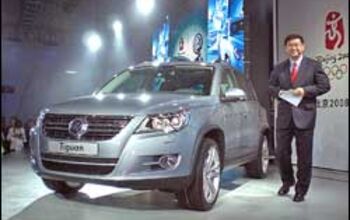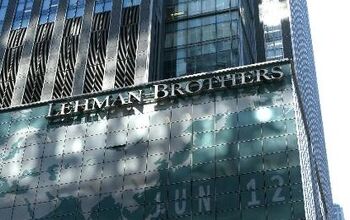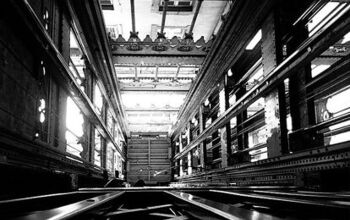Going Down
Montagues vs. Capulets. Crips vs. Bloods. ‘Vette vs. Porsche. How do I plead? Nolo contendere. Technically, I qualify as an "auto journalist." But I'm a lot more interested in the companies that build the cars than in the cars themselves. I just don't have quite the same level of fire as some of my fellow writers; so it's impossible for me to be much of a "car snob." Beer is a different matter.
One of the most important lessons I took to heart back in college: "life is too short to drink cheap beer." While I've tried not to be an arrogant bastard about it, I've made it my policy to spend the extra money to upgrade my suds. If no alternative is available, I'll stick to regular draft (life is also too short to drink light beer, ditto cans) or longnecks (as a last resort). I've held to this vow fairly tightly, except for one "guys game night." Sad but true: I drank Schlitz.
Right now, you're reacting in one of three ways: "Ewww!" "Huh?" or "Hey wait a minute!" You see, back in the day, Schlitz was the second-best selling brew in America, the "beer that made Milwaukee famous." Now it's an only-occasionally-made regional discount brew. And therein lies the tale, and the warning for the other guys on the Great Lakes.
Back around the mid 1970s, the president of Schlitz faced a choice. While his brew had national reach, he'd run up against stalling sales volume. Winning more market share would require a massive investment in advertising– that might not pay off. Instead, he chose to increase profits without growing his market share, with disastrous results.
Given the usual jokes made about American beer, you might be surprised that there are still corners that can be cut. These shortcuts mostly involve shortening the brewing process. In so doing, a brewery can produce more beer with the same equipment, thus reducing their costs and raising their profits.
The shortcuts done, and redone, Schlitz was riding high. According to their marketing, their customers couldn't tell the difference. Then things went to pieces.
It's hard to nail down exactly what started the slide. Philip Van Munching's excellent "Beer Blast" offers two reasonable guesses. First, while you can't taste the difference between process A and B or D and E, you can tell the difference between A and E. Second, there were preservation issues (what he calls "snot-ridden" beer).
Whatever the cause, the "retribution" was swift. Schlitz sales fell, forcing discounting. This led to further sales drops, which resulted in a drop from number two all the way to regional discount brew. At the same time, Schlitz' reputation fell all the way from "bad" to "bad joke."
The important lesson to be taken from this incident: once you drop into discount territory– selling on price and to the die-hards– there's virtually no going back. Oh, there's precious little money to be made in discount Hell.
How does this relate to the auto industry? Well, you could stick Budweiser in a list with Chevrolet, or Ford for that matter. These are powerful extremely mainstream brands with strong ties to grass-roots America. Historically, Chevy and Ford have been carefully priced to be affordable by practically anyone gainfully employed in the USA.
But the automakers now face the same choices as Schlitz: stick to your guns and watch market share erode, or cut prices in search of volume?
Lately, these car brands have been selling almost exclusively on price. They're falling into the bargain basement. Getting out of it can take years. Ask Hyundai, who aren't quite out of it yet. Or Cadillac, who fell in, climbed out, and are threatening to fall back in again.
Losing the last bit of brand cachet not only hurts the main brands, it threatens their "premium" brands because, well, halos shine both ways. Bud can "support" Michelob, Iron City can't. If you think Lincoln and Buick are hurting now, it could get much worse.
With years of inflated sales and fleet dumps racked-up, can The Big 2.8 stay out of the "discount" trap? Chrysler looks to already be in it. Plymouth can't take the blame anymore and even in their best years their sweet spot was set very low (K-car, Neon). Worse, Chrysler the "premium" brand has virtual no cachet left.
Ford seems the safest, partially because of better products but mostly, forgive the pun, because their focus. GM's vehicles aren't much worse than Ford's; what's driving them down is the division structure. Instead of missing one sales target, they are missing three or four. Every discounted Pontiac or Saturn pushes Chevy lower and lower to keep up their volume, which forces more cutting, which forces more incentives.
GM desperately needs to hold the line with Chevy and the only realistic way is killing off the "middle" brands. They are holding the price points Chevy needs, and they are pushing it into a hole it will never climb out of. It's one thing to be affordable, quite another to be cheap.
More by Andrew Dederer
Latest Car Reviews
Read moreLatest Product Reviews
Read moreRecent Comments
- SCE to AUX All that lift makes for an easy rollover of your $70k truck.
- SCE to AUX My son cross-shopped the RAV4 and Model Y, then bought the Y. To their surprise, they hated the RAV4.
- SCE to AUX I'm already driving the cheap EV (19 Ioniq EV).$30k MSRP in late 2018, $23k after subsidy at lease (no tax hassle)$549/year insurance$40 in electricity to drive 1000 miles/month66k miles, no range lossAffordable 16" tiresVirtually no maintenance expensesHyundai (for example) has dramatically cut prices on their EVs, so you can get a 361-mile Ioniq 6 in the high 30s right now.But ask me if I'd go to the Subaru brand if one was affordable, and the answer is no.
- David Murilee Martin, These Toyota Vans were absolute garbage. As the labor even basic service cost 400% as much as servicing a VW Vanagon or American minivan. A skilled Toyota tech would take about 2.5 hours just to change the air cleaner. Also they also broke often, as they overheated and warped the engine and boiled the automatic transmission...
- Marcr My wife and I mostly work from home (or use public transit), the kid is grown, and we no longer do road trips of more than 150 miles or so. Our one car mostly gets used for local errands and the occasional airport pickup. The first non-Tesla, non-Mini, non-Fiat, non-Kia/Hyundai, non-GM (I do have my biases) small fun-to-drive hatchback EV with 200+ mile range, instrument display behind the wheel where it belongs and actual knobs for oft-used functions for under $35K will get our money. What we really want is a proper 21st century equivalent of the original Honda Civic. The Volvo EX30 is close and may end up being the compromise choice.

































Comments
Join the conversation
Hey, I like cheap beer. As stated above, the taste of most macrobrewed beers are all pretty similar, and the only time I drink beer is when I want to feel the affect of alcohol (often before I start scraping knuckles working on my cars), so I'm not going to shell out big money on an infrequent hobby. Most of the guys I work with are imported beer snobs - the pressure of mindless conformity in Corporate America almost requires it. If I go out with people from the office, I get the Miller High Life, and ask for the bottle, and dreaming of earning a free Miller High Life Beer Truck Delivery Driver shirt. Short term vs. long term is always the struggle in Corporate America. Ditto for Washington D.C.
Hal: Sounds like you've got good taste. I love Spaten Optimator and Franziskaner Dunkel. I used to think they were the best beer until I had some Mendicino Brewing Company Rasputin Russian Imperial Stout on tap at Flying Pie Pizza in Boise, Idaho. The creaminess mmmmm. It makes me lick my lips just thinking about it. If you ever get a chance, it's pretty good even from a bottle. I'd really like to have the opportunity to have some really fresh Spaten in Murchen some time. I'm sure it has the same marked improvement when fresh and on tap that I tasted in the Rasputin.